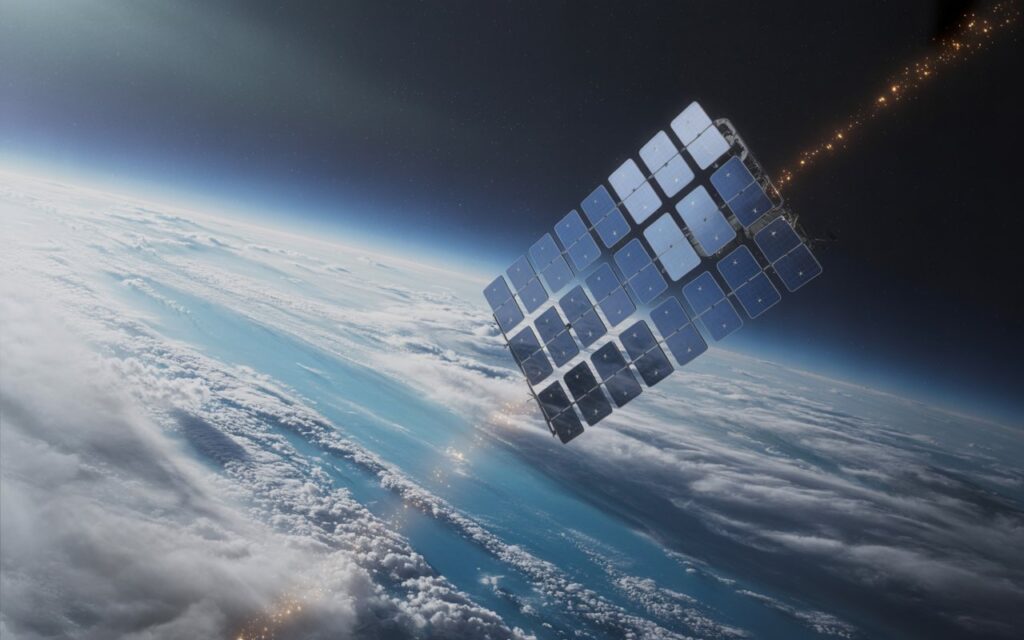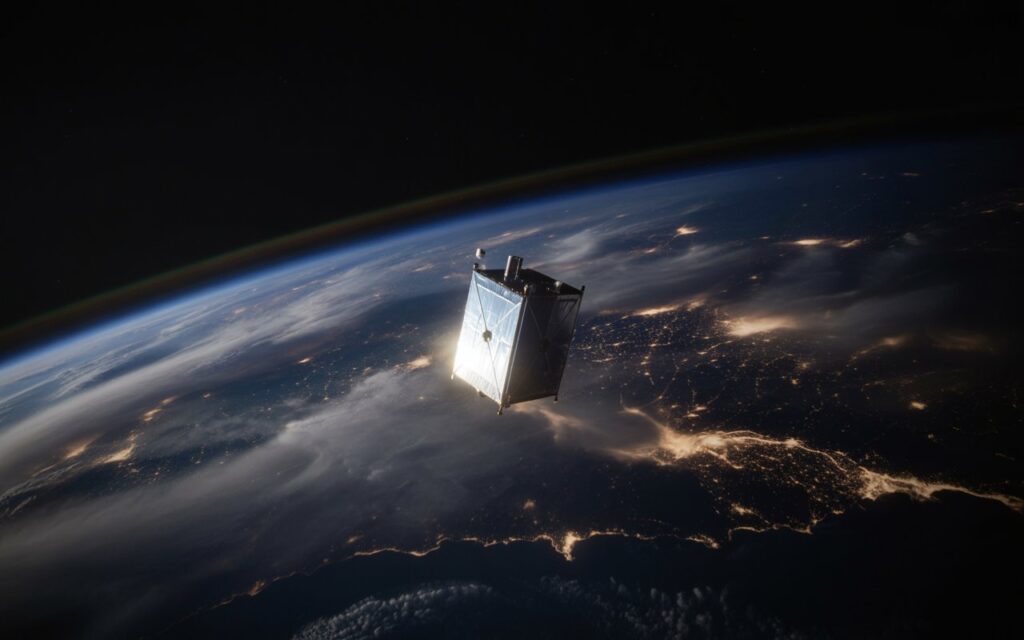SpaceX Deploys 24 Starlink Satellites in yet another ambitious mission that pushes the boundaries of global connectivity. With this successful launch, SpaceX strengthens its rapidly growing Starlink constellation, now numbering in the thousands, aimed at delivering high-speed internet access to even the most remote corners of the world.
This latest mission is more than just a routine satellite deployment—it’s a step closer to bridging the digital divide. Today, nearly 2.6 billion people worldwide still lack reliable internet access, according to ITU (International Telecommunication Union) reports. By adding 24 new satellites into orbit, SpaceX moves closer to its vision of ensuring that internet access is no longer a privilege tied to geography but a universal right.
The launch also showcases the scalability of the Starlink project. Every new batch of satellites expands coverage, reduces latency, and improves bandwidth for existing users. Whether it’s enabling a school in a remote Alaskan village to connect with the world, or supporting emergency responders during natural disasters where ground networks fail, the impact of these satellites is tangible and immediate.
In essence, when SpaceX Deploys 24 Starlink Satellites, it’s not just advancing technology—it’s redefining what global communication means for millions of people.
Also Read: Microsoft’s New Copilot 3D—AI Tool Converts Images to 3D Models Instantly
Mission Overview: SpaceX Deploys 24 Starlink Satellites to Polar Orbit

In its latest mission, SpaceX Deploys 24 Starlink Satellites into a polar orbit, marking another important milestone for the company’s ambitious satellite internet project. The launch took place from the Vandenberg Space Force Base in California, a site chosen for its ideal positioning to support polar launches. The Falcon 9 rocket lifted off successfully, carrying the batch of 24 satellites to low Earth orbit (LEO) with precision.
One of the highlights of the mission was the continued demonstration of reusability. The Falcon 9 booster used for this flight had already completed multiple missions before, and once again, it returned safely to Earth, landing on the droneship Of Course I Still Love You stationed in the Pacific Ocean. This achievement not only underscores SpaceX’s commitment to lowering the cost of space access but also demonstrates the reliability of its reusable rocket technology.
What makes this launch particularly special is its trajectory into polar orbit. Unlike the more common equatorial orbits, polar orbits allow satellites to pass over nearly every point on Earth as the planet rotates beneath them. This makes them vital for delivering connectivity to regions often overlooked by traditional satellites—such as Alaska, northern Canada, and parts of the Arctic and Antarctic. Polar launches are relatively rare, as they require specific launch conditions and careful planning to avoid populated landmasses during the rocket’s ascent.
By choosing this orbital path, SpaceX Deploys 24 Starlink Satellites that will significantly improve coverage for users in high-latitude areas where internet access is either unreliable or unavailable. This mission is more than just another addition to the Starlink network—it’s a targeted step toward ensuring true global connectivity.
Also Read: IPhone 17 Launch Sept: Rumors, Specs & GPT-5 Integration
Technical Significance: SpaceX Deploys 24 Starlink Satellites Using Reusable Falcon 9

One of the most remarkable aspects of this mission is not just that SpaceX Deploys 24 Starlink Satellites, but how they are launched. At the heart of this achievement is the Falcon 9 rocket, a workhorse that has revolutionized the economics of space travel. Unlike traditional rockets that could only be used once, Falcon 9 is built to be reusable, with its first stage designed to return safely and land for future flights.
The booster used in this mission had already completed numerous flights before, highlighting the company’s ability to reuse rockets again and again without compromising reliability. Each successful reuse drastically reduces launch costs, allowing SpaceX to deploy satellites more frequently and at a fraction of the price compared to conventional launch providers. This strategy not only benefits the company but also accelerates the expansion of the Starlink constellation.
Equally impressive is the rapid launch cadence SpaceX has established. The company has achieved the capability to launch rockets within days of one another, setting records in the aerospace industry. In 2025 alone, SpaceX has averaged multiple launches per week, a pace previously thought impossible. This consistency ensures that every time SpaceX Deploys 24 Starlink Satellites, the network grows stronger, faster, and more reliable.
Reliability also plays a huge role here. Falcon 9 has surpassed 300 successful launches with an industry-leading success rate. This track record builds trust among global customers, governments, and businesses relying on satellite services. For Starlink users, it means confidence that the network is supported by a robust and proven launch system.
Ultimately, the fact that SpaceX Deploys 24 Starlink Satellites with a reusable Falcon 9 is not just a technical feat—it’s a paradigm shift in spaceflight economics and scalability. By combining cost-efficiency with reliability, SpaceX is setting a new standard for the future of satellite deployment.
Also Read: Zoho Launches Zia AI Model and Pre-Built Enterprise Agents
Strategic Impact: SpaceX Deploys 24 Starlink Satellites — Enhancing Polar Region Coverage

The decision to launch into a polar orbit makes this mission especially significant. When SpaceX Deploys 24 Starlink Satellites to polar regions, it ensures that coverage is not limited to heavily populated areas near the equator but also extends to the world’s most remote and underserved high-latitude regions. Unlike equatorial orbits that mainly serve mid-latitude zones, polar orbits allow satellites to pass over every longitude as the Earth rotates, making them vital for achieving true global coverage.
For communities in the Arctic, northern Canada, Greenland, and Alaska, internet connectivity has historically been unreliable, slow, or prohibitively expensive. In some cases, residents depend on outdated infrastructure like geostationary satellites, which suffer from high latency and limited bandwidth. By contrast, low Earth orbit satellites like Starlink can provide low-latency, high-speed broadband, enabling everything from online education to telemedicine and digital commerce.
The impact of this is both social and economic. When SpaceX Deploys 24 Starlink Satellites into polar orbit, it gives isolated villages access to real-time communication, helps local businesses connect with global markets, and supports scientific research stations in the Arctic and Antarctic. It also aids government and defense agencies that require robust communication networks in these strategic but often overlooked regions.
Additionally, polar coverage is essential for disaster response and climate monitoring. For instance, during extreme weather events in northern latitudes, reliable internet becomes a lifeline for coordination and relief. Similarly, researchers tracking climate change in polar ice caps benefit from uninterrupted satellite connectivity.
By expanding service to these critical regions, SpaceX is not only growing its commercial reach but also addressing a long-standing gap in global internet access. Simply put, when SpaceX Deploys 24 Starlink Satellites to polar orbit, it is ensuring that no corner of Earth is left behind in the digital revolution.
Constellation Growth: SpaceX Deploys 24 Starlink Satellites Among Thousands in Orbit
Every time SpaceX Deploys 24 Starlink Satellites, the constellation inches closer to becoming the largest communications network in human history. As of mid-2025, SpaceX has launched more than 9,300 Starlink satellites, with around 7,100 currently operational in low Earth orbit. This latest batch adds to that active fleet, further strengthening global coverage and reducing service gaps.
The scale of this constellation is unprecedented. To put it into perspective, before Starlink, the total number of active satellites orbiting Earth from all nations combined was only a few thousand. Today, Starlink alone accounts for the majority of active satellites, a testament to SpaceX’s rapid and consistent launch cadence.
Milestones highlight this trajectory. In 2019, the first 60 Starlink satellites were launched, marking the program’s beginning. By 2021, the constellation surpassed 1,500 active units, and by 2023, it crossed 4,000. Now, with SpaceX Deploys 24 Starlink Satellites missions happening multiple times each month, the network is accelerating toward its ambitious target of 12,000 satellites approved for operation, with applications filed to extend that number to as many as 42,000.
In comparison, competitors in the satellite broadband space are moving at a far slower pace. Amazon’s Project Kuiper aims to deploy around 3,200 satellites but has only just begun test launches. OneWeb, another key player, has about 600 satellites in orbit—enough for partial coverage but nowhere near Starlink’s global reach. This massive gap underscores SpaceX’s lead, not just in scale but also in practical service availability.
What makes this growth meaningful is not just the numbers—it’s the human impact. With every mission, like when SpaceX Deploys 24 Starlink Satellites, the constellation becomes denser, meaning better speeds, lower latency, and greater reliability for millions of users worldwide. It’s a growth story that reflects both technological ambition and a practical push to connect those who’ve long been left offline.
Contextual Background: What Led to SpaceX Deploys 24 Starlink Satellites Now
To understand the importance of this mission, it helps to look back at how the Starlink program evolved. When SpaceX Deploys 24 Starlink Satellites today, it’s building on years of rapid development and steady progress that began in 2019, when the very first batch of 60 satellites was launched. At the time, the idea of creating a mega-constellation sounded ambitious, even unrealistic, but within just a few years, Starlink has become a household name in satellite internet.
Since those early launches, the deployment schedule has accelerated at an unprecedented pace. By 2021, SpaceX had successfully placed more than 1,500 satellites into orbit, enough to begin beta testing its internet service in North America and parts of Europe. The following years saw dozens of additional launches—sometimes multiple missions per month—expanding coverage across continents. Now in 2025, each mission like this one where SpaceX Deploys 24 Starlink Satellites is part of a much larger push to meet the company’s long-term goal of operating 12,000 satellites, with approval requests filed for as many as 42,000 in the future.
Another crucial element in this journey has been the steady improvement of Starlink technology. The first generation of satellites, while groundbreaking, had limitations in bandwidth and visibility from Earth. The second-generation “Starlink V2 Mini” satellites, currently being deployed, are smaller, more efficient, and equipped with advanced features such as improved antennas, higher data throughput, and even laser inter-satellite links that allow them to communicate with one another directly. These upgrades reduce reliance on ground stations and enable faster, more seamless global coverage.
This mission is also part of a broader pattern: SpaceX has increasingly focused on specialized launches that target underserved regions. While earlier deployments focused on building out coverage in densely populated areas, polar orbit launches—like this one—demonstrate SpaceX’s commitment to ensuring that no region is left behind.
In short, when SpaceX Deploys 24 Starlink Satellites now, it’s not an isolated event but a continuation of a carefully planned strategy. It reflects both the maturity of the Starlink program and its vision of building a truly global internet service that adapts and improves with each new generation of satellites.
Challenges & Concerns: After SpaceX Deploys 24 Starlink Satellites
While the achievement is impressive, challenges remain even after SpaceX Deploys 24 Starlink Satellites into orbit. One of the most vocal groups raising concerns has been the astronomical community. Astronomers worldwide have reported that the bright reflections from Starlink satellites interfere with ground-based telescopes, leaving streaks across images of the night sky. Studies show that nearly 10–20% of wide-field astronomical images can be impacted when large constellations are overhead, potentially obstructing vital research like tracking near-Earth asteroids or studying distant galaxies.
Beyond light pollution, there are also growing worries about orbital congestion. With thousands of satellites already in low Earth orbit and thousands more planned, the risk of collisions increases significantly. A single debris-generating event could set off a dangerous chain reaction, known as the Kessler Syndrome, threatening not just Starlink but all space-based operations, including weather monitoring, navigation, and Earth observation satellites.
On the user side, performance concerns occasionally arise. While Starlink provides fast, low-latency internet in many regions, bandwidth can become stretched as more customers sign on. Rural communities often see strong results, but dense urban usage sometimes leads to variability in speeds, showing that capacity management is as important as expansion.
To address these issues, SpaceX has taken proactive steps. Newer “Starlink V2 Mini” satellites are designed with anti-reflective coatings and sunshades (VisorSats) to minimize brightness, making them far less disruptive to astronomers. The company has also introduced laser inter-satellite links, which reduce the need for dense ground stations and optimize network efficiency. Additionally, SpaceX works closely with international space agencies to coordinate satellite positioning and reduce collision risks, aided by automated collision-avoidance software on each satellite.
In essence, while challenges remain after SpaceX Deploys 24 Starlink Satellites, the company is actively innovating to balance rapid growth with responsibility. It’s a reminder that building the largest satellite constellation in history comes not only with benefits but also with global obligations to science, safety, and sustainability
Future Outlook: What’s Next After SpaceX Deploys 24 Starlink Satellites
Each mission builds momentum, and the story doesn’t end when SpaceX Deploys 24 Starlink Satellites. Instead, it sets the stage for a far bigger future. SpaceX’s long-term roadmap envisions a constellation of 12,000 operational satellites, with regulatory approval requests to scale that number up to an extraordinary 42,000 units. If realized, this would represent the most comprehensive satellite network ever built, capable of connecting billions of people.
The next phase of expansion hinges on next-generation satellite technology. The “Starlink V2 Mini” satellites already in orbit come with improved antennas, higher data capacity, and laser inter-satellite links, which allow satellites to communicate directly with each other. This feature reduces reliance on ground stations and enables faster, more resilient internet coverage across oceans, deserts, and polar regions. Looking ahead, SpaceX also plans to introduce Direct-to-Cell capabilities, allowing standard smartphones to connect directly to satellites without special hardware. This could eliminate cellular dead zones, a game-changer for rural communities, travelers, and emergency response teams.
Another critical piece of the puzzle is Starship, SpaceX’s fully reusable heavy-lift vehicle currently in testing. While Falcon 9 has been the backbone of Starlink’s growth, Starship is expected to carry hundreds of satellites in a single launch, drastically accelerating deployment. Once operational, Starship will reduce launch costs even further, making it feasible for SpaceX to scale Starlink at an unprecedented pace while supporting larger and more advanced satellite designs.
In the bigger picture, when SpaceX Deploys 24 Starlink Satellites, it’s not just about the immediate coverage gains—it’s about laying the groundwork for a truly global, low-latency communications network that could transform industries from aviation to maritime, and even support deep-space missions through satellite-to-satellite relays.
The future of Starlink is ambitious, but each mission adds another piece to the puzzle. And with innovations like Direct-to-Cell and the upcoming Starship era, the vision of connecting every person on the planet is moving from possibility to inevitability.
Conclusion: SpaceX Deploys 24 Starlink Satellites — A Milestone in Global Internet Access
The latest mission, where SpaceX Deploys 24 Starlink Satellites, is more than just another entry in the company’s growing list of launches—it’s a milestone in the journey toward universal internet access. By successfully placing this new batch of satellites into polar orbit, SpaceX has not only expanded its constellation but also extended connectivity to some of the most remote and underserved regions on Earth.
This mission reinforces the strength of the Starlink network, showcasing how reusable rockets, advanced satellite technology, and strategic orbital planning come together to reshape the future of communication. Each launch brings the world closer to bridging the digital divide, ensuring that students in rural communities, researchers in the Arctic, and families in underserved areas can enjoy the same fast, reliable internet as those in major cities.
The bigger picture is clear: every time SpaceX Deploys 24 Starlink Satellites, it strengthens the backbone of a truly global network. With more missions planned and advancements like Direct-to-Cell connectivity on the horizon, the vision of seamless worldwide internet access is no longer a dream—it’s becoming a reality.
For those inspired by this progress, the journey is far from over. Follow upcoming Starlink launches, explore how the service could benefit your region, and be part of the story as SpaceX continues to expand the boundaries of connectivity across the globe.





One thought on “SpaceX Deploys 24 Starlink Satellites to Strengthen Global Internet Coverage”